Mora’s Dorado Streamer: Video
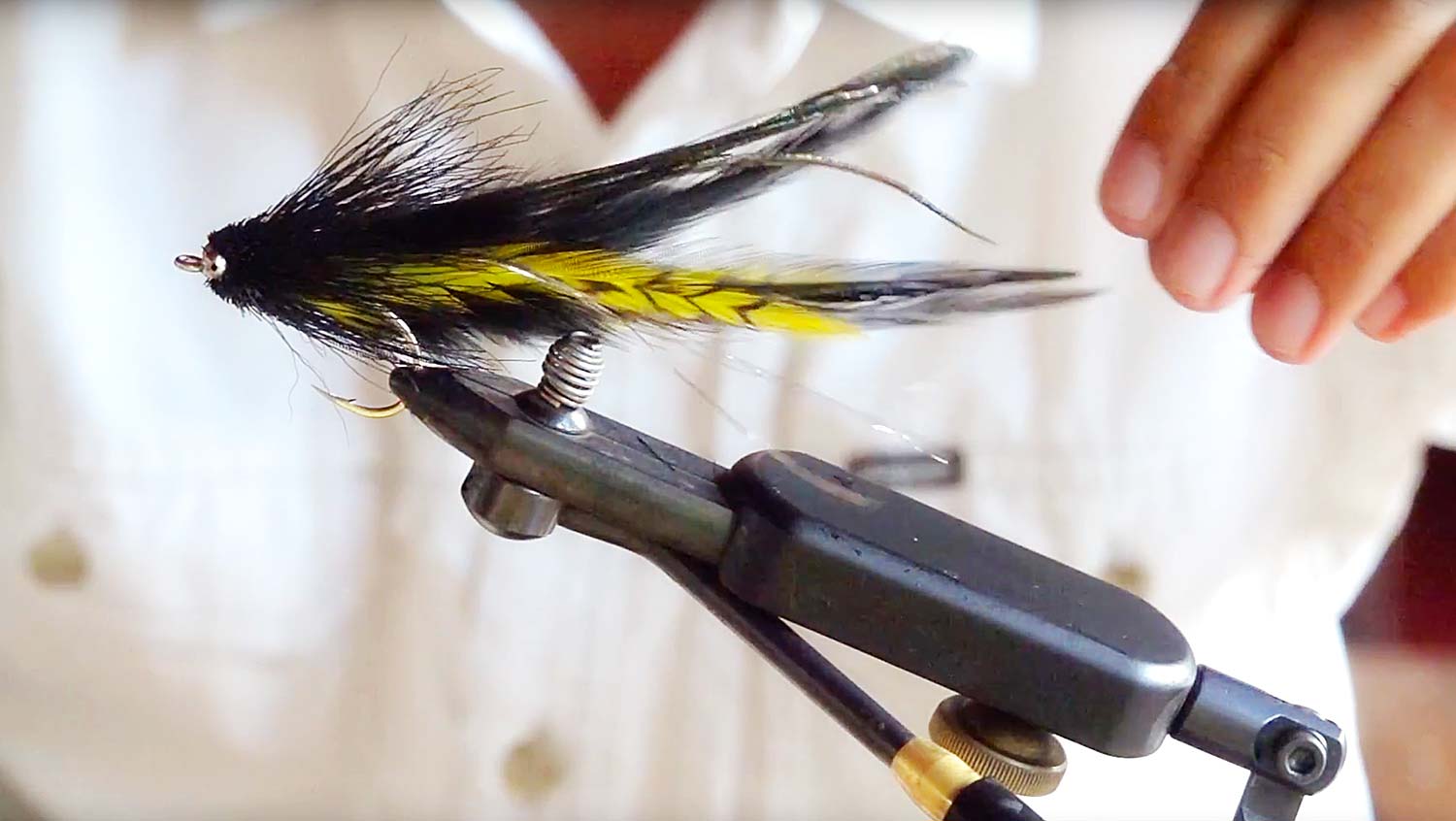
Dorado streamers are an exercise in elegance.
The first time I tries tying streamers for golden dorado I made a mess of it. I imagine that is a pretty common experience for anglers tackling this apex predator for the first time. Coming from a background of tying streamers for species like trout, pike and musky, my instinct was to put way too much material on the hook. The flies looked great, but they were impossible to fish in the way they need to be fished.
Dorado fishing is intense. There is no explaining it. You just have to experience it for yourself. It’s streamer fishing at it’s absolute best and most demanding. You have to make accurate cast, quickly, and you have to do it all day. Your ability to accurately cover structure is key. It’s like tactical shooting with a fly rod. If your fly is too heavy, you’ll be toast at the end of the day when your chance of hooking a kraken are their best.
The most important thing in tying any fly is to understand the target species, how they feed and the triggers that make them eat.
Dorado flies don’t need to run deep. The fish is not afraid to come to the surface, or of anything else for that matter. They also do not need to push a ton of water. They do need a sizable profile, great action and high contrast. Effective dorado patterns deliver these elements with the bare minimum of materials.
The guides at Parana on the fly, where I host my annual dorado trip, tie every day. These guys know dorado and are masters at crafting effective patterns. Don’t be fooled by their simplicity. It’s exactly that simplicity that makes them effective.
HERE’S PARANA ON THE FLY GUIDE LUCAS MORA TYING A CLASSIC DORADO STREAMER.
Read More »The Fusion Warrior
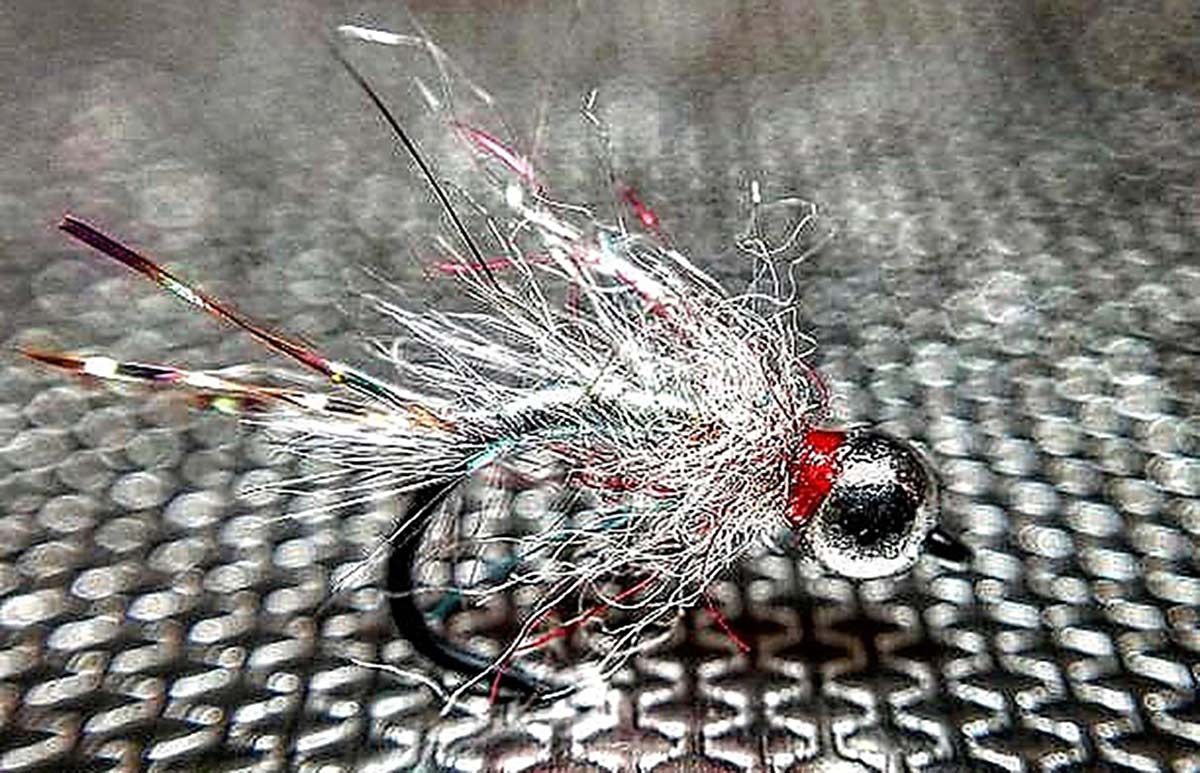
If Lance Egan’s Rainbow Warrior and my Fusion hooked up and had a beautiful baby, what would it look like?
Wyoming winters are long, really long. These conditions can be challenging to endure, yet they provide ample time for creation behind the tying vise. After posting a tying video for Lance Egan’s Rainbow Warrior I couldn’t help but wonder. I was curious what a combination of my Fusion and his Warrior would look like.
I’m a huge believer in the combination of a little flash and a lot buggy when it comes to nymph. The combination of these two patterns fills that niche wonderfully. The use of grey ostrich herl in the abdomen provides ample movement and a subtle veil to the flash of the underlying tinsel. The application of the Rainbow Sow Scud dubbing provides mottled coloration and a soft hackle like movement when applied with a dubbing loop. Tied on the Tiemco 2499BL in black, the pattern supports a significant gap that helps to increase the odds of hooking and holding fish.
When fishing this pattern I use it as
Read More »Spring Bass Tactics for Southern Appalachian Lakes
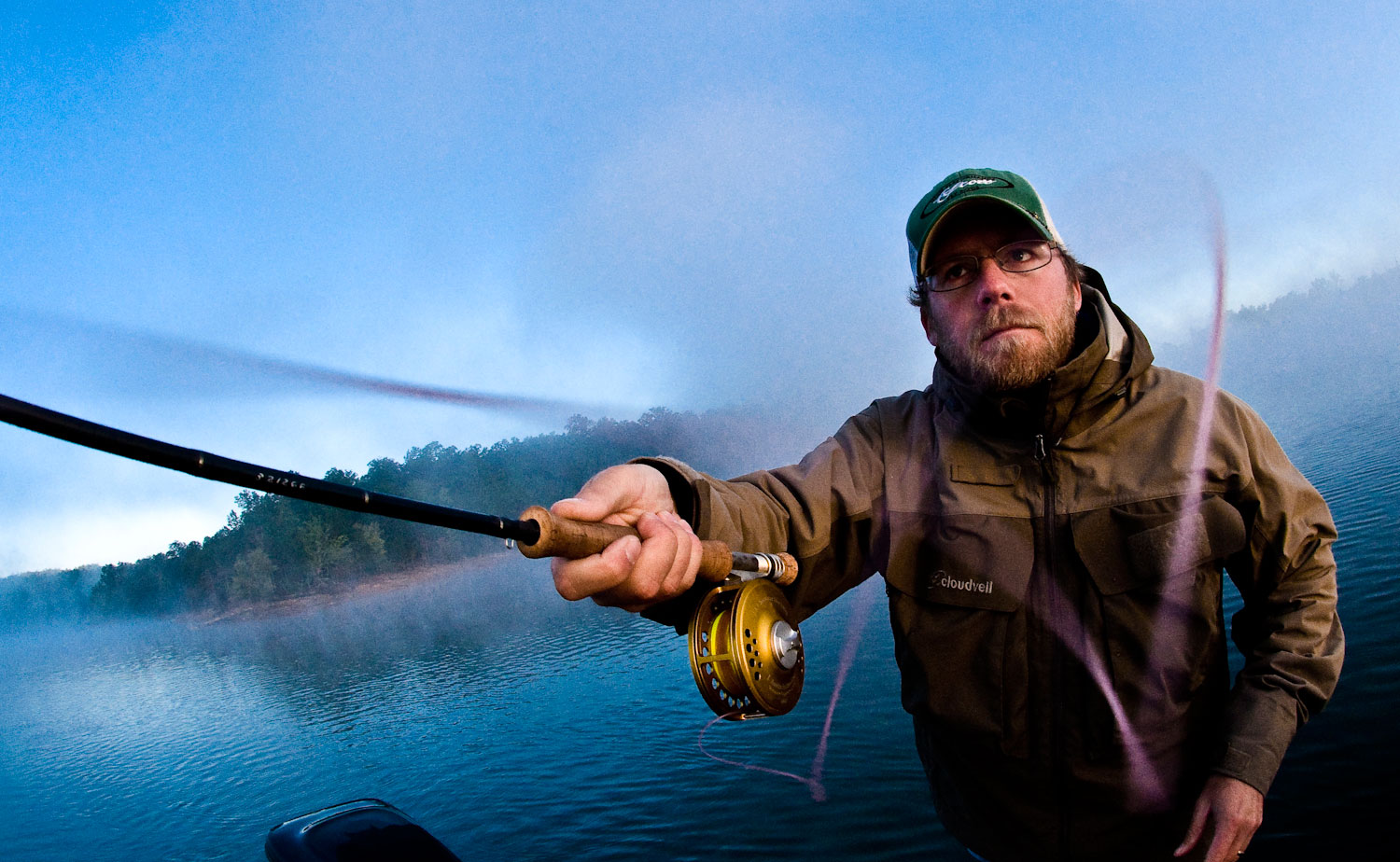
Spring Bass Fishing Tactics for fly anglers interested in Southern Appalachian reservoirs. There’s tons of lakes readily available for fly fisherman to catch bass throughout the Southern Appalachian region. Unfortunately, these lakes aren’t your two-acre farm pond in your backyard or subdivision that you grew up fishing as a kid—they’re multi-thousand acre reservoirs that can be extremely challenging to learn how to fly fish. Fly Fishing Reservoirs starts with fishing the correct areas. Fly fishing for bass on public reservoirs is much like trying to find a needle in a haystack. If you don’t have a general idea of where the needle is located, your chances of finding it are slim to none. To be successful fly fishing lakes, you’ll have to quickly be able to eliminate areas of the lake where the bass aren’t located and then narrow your focus to small areas of the lake that provide bass what they need. Bass need the following: suitable habitat, satisfactory food and comfortable water conditions (water temperature & water depth). All these change depending on the season. In our case, we’ll be focusing on what bass need during the spring. Just like in trout fishing, bass fishing is all about bypassing unproductive water and spending your time fishing the productive water. Eighty percent of the bass on the lakes will be found in 20 percent of the water. If you want to catch them, you’ll need to maximize your time fly fishing the correct water. A Quality map of the lake is critical Keep in mind, all maps aren’t created equal (and many are total crap). The map you want to buy needs to have enough detail on it that you can get a clear picture of what the lake looks like underwater and what types of cover it has. … Continue reading
Read More »Aquamarine, A Permit Tale
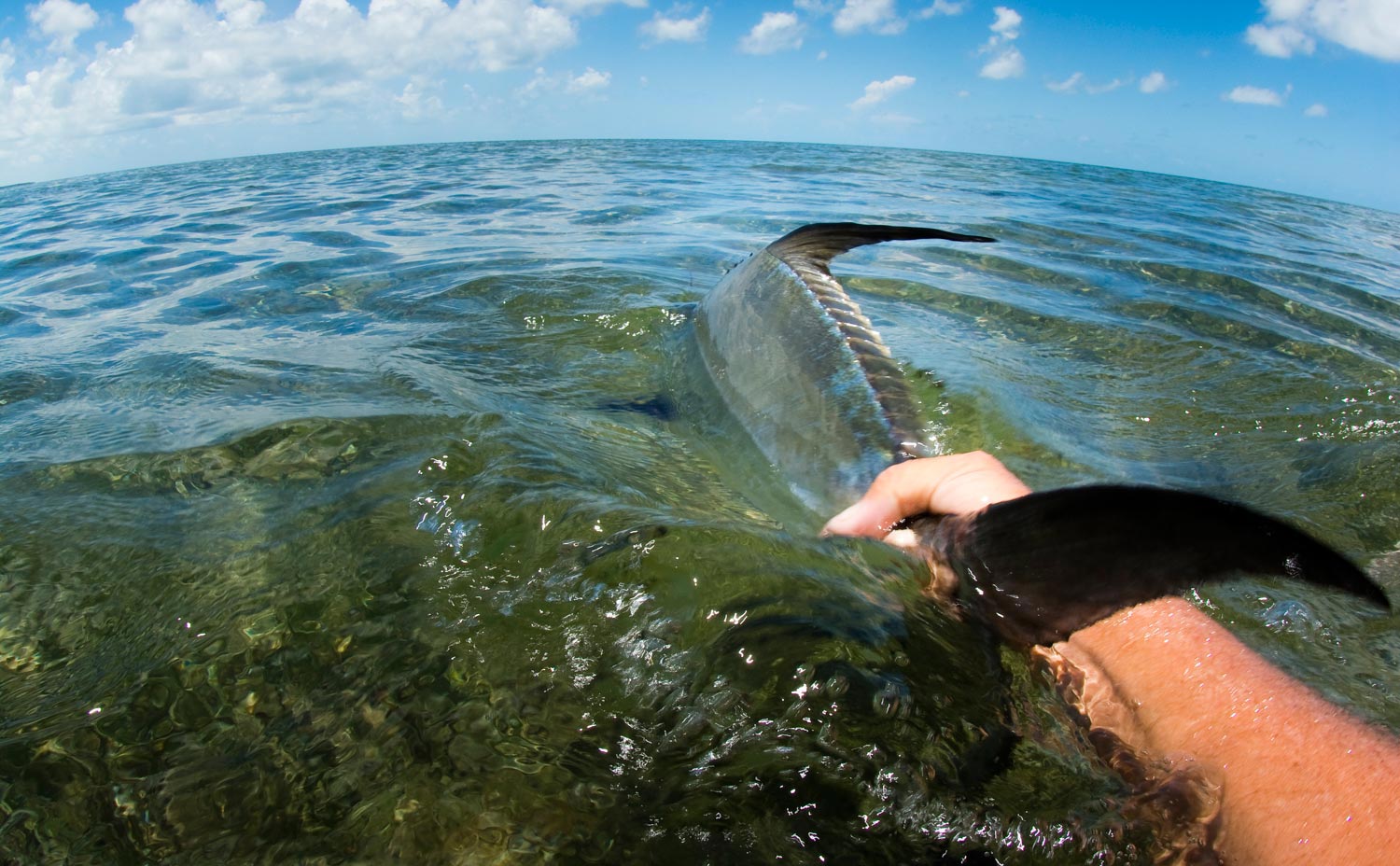
“Now! Now is the time! Hurry!”
I am perched on the bow of a rocking Hell’s Bay Waterman, on the flats of Abaco, squinting through my bifocals and trying in vain to find the opening in a figure 8 knot. I’ve cut off six different crab flies and lucky number seven is waiting for me to finish this damned knot, while a forty-pound permit feeds in front of the boat. Ashron, my guide, is trying to help. I know this, but it’s not working. Sweat is running into my eyes and I’m starting to get tunnel vision.
The permit stops feeding and I’m finally able to finish the knot. Now we have to wait again. This big permit is doing what’s called “riding a ray.” It’s hovering over a manta ray about six feet across and picking up the scraps the ray misses. It’s sort of the Holy Grail of permit shots. As long as they stay together, the permit will focus on the ray and eat happily. We pole along about seventy-five feet behind them waiting for the ray to stir up the mud by feeding. Drop a crab pattern in that little puff of mud and you stand your best possible shot at hooking up on the permit.
Six different crab patterns have failed to get the desired reaction. I’ve had looks, swirls, follows and charges but no eats. Lucky number seven is a tiny Mop Crab no bigger across than my pinky nail. There is no eighth pattern in my box. There was, in fact, no seventh pattern. This fly came from Ashron’s hat. I’m already kicking myself for that. I’m kicking myself for making some bad casts early on, for not having practiced more before I came, for not calling my mother more often and any other shortcoming I can think of. This is what happens in your head when permit fishing and I know full well that the nagging voice in my head must be quieted before that ray muds again. That’s the devil F-ing with you. Permit ride rays and the devil rides permit.
“Now!” Ashron tells me. I see the puff of mud, I let go of my fly and sweep back my rod and tell the devil, “Watch this.”
Read More »Labrador Bound
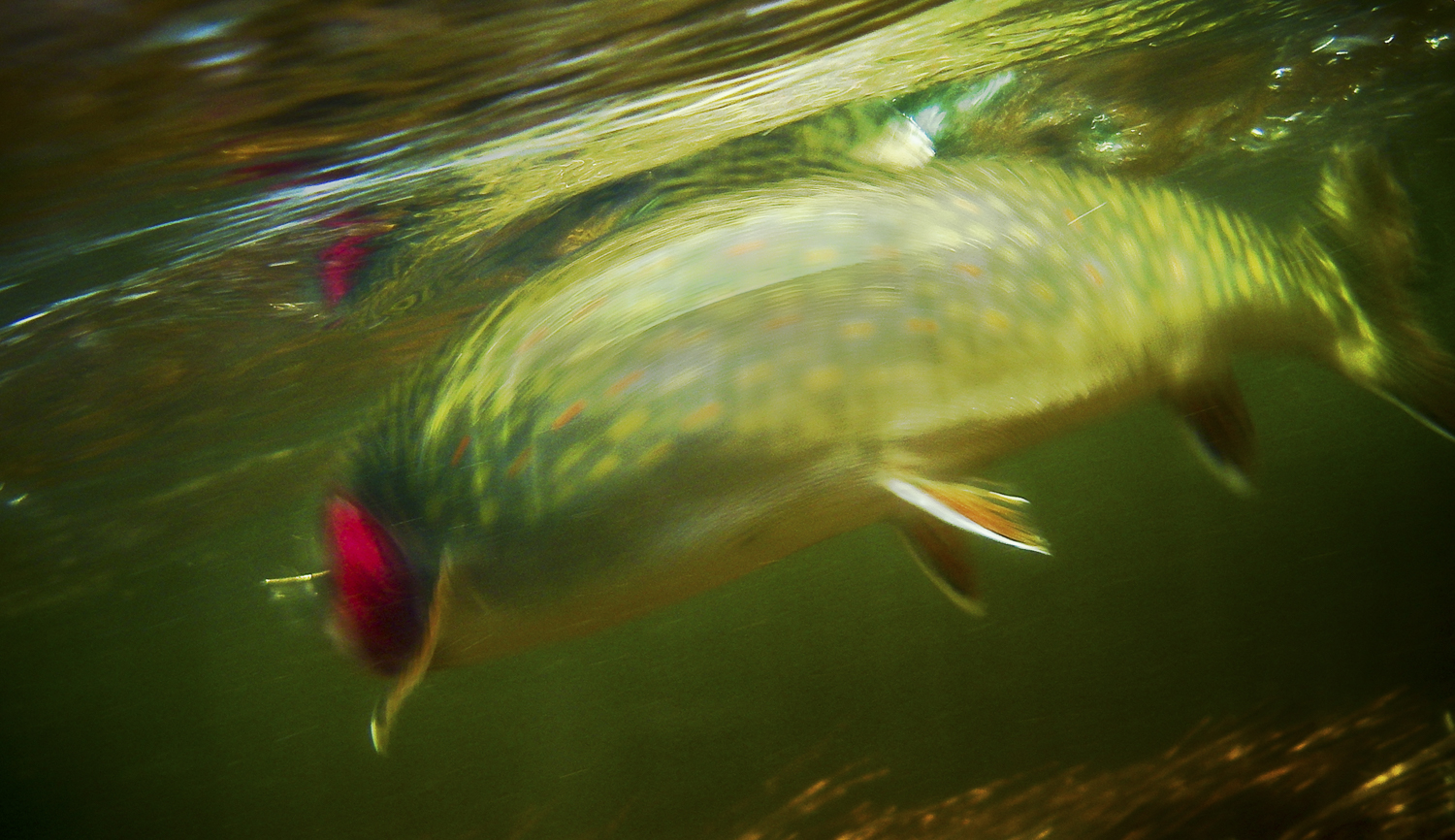
By Jason Tucker
It’s no secret that I love brook trout, and thus the name of my blog, Fontinalis Rising.
Size doesn’t matter. From 4-inch little gems to behemoth monsters the size of respectable brown trout, I find them all fascinating and exciting. When I was a boy, my grandfather took me down to the river and showed me two fish in the 24-inch range that had staked out the area as home.
Most of our fish were in the 6- to 8-inch range, and 12 inches was considered a good fish. To see two fish that had doubled that mark was incredible. Ever since then, I’ve wondered what made those two fish get so big.
I spent as much time as possible fishing for brook trout in Northern Michigan and its Upper Peninsula, and after many years I finally caught a 16-inch fish, which was my personal best for some time.
Since then I’ve gone to Nipigon, where a 12-inch fish is considered small. I caught one fish that was 22 inches, and lost several fish that were much bigger. (Brook trout tend to pack on the pounds once they reach about 22 inches. A 20-inch fish may weigh 3 pounds while a 23-incher may weigh 7 pounds.)
A few years later I was invited to go fish with the Sault Gang. We caught 38 fish that averaged 18-20 inches and 1.5 to 3 pounds, and got one big male that was over 4 pounds. I also took a trip to Isle Royale with a distinguished group of gentlemen. The fish there average 3-5 pounds. With research I’ve discovered that
Read More »Eye Surgery #8 Update

By Louis Cahill
I’m two weeks Post-op and things are going well.
I hate talking about my medical issues, but lots of you are asking for updates, so I’ll keep it short. That should be easy since, as of now, all the news is good. A lot went on in the run up to the surgery but I’ll just hit the high points.
Things were feeling a little sketchy the week before my surgery. The oil in my eye had completely turned to muck. Like spring run-off inside my eye. As a result, I developed glaucoma. Rising eye pressure threatened to damage my optic nerve. There was no choice but to remove the oil, however, the murky oil prevented my doctor from seeing the condition of the retina. He was going in blind and not happy about it. I won’t lie, it was scary.
Fortunately the surgery went well. Dr Alurkar flushed two liters of solution through my eye cleaning it out and the retina stayed attached. Statistically, the majority of folks in my situation, who do experience another detachment, do so during surgery. The vast majority experience it during the first week. I’m two weeks out now and my doctor says the retina looks fantastic! After a couple of truly awful days, my pressure has returned to normal so it appears I dodged the glaucoma bullet with no apparent nerve damage. I will not be in the clear for 60-90 days but things look really promising right now.
It will take at least 90 days to really know what I can expect for vision. It’s a mess right now but the double vision caused by the oil is gone and as of just last night my eyes have started trying to focus again. That’s very encouraging. Whatever I end up with, I’ll be very happy to have it. I’m struggling to keep my expectations in line. I’m just superstitious enough to worry about jinxing myself, but I’m starting to feel truly optimistic. I am sooooooo ready to get on with my life!
Thank you all for your continuing support throughout this nightmare. I can not tell you how good it feels to have so many people in my corner. I can’t imagine how difficult this would have been without that support. Hopefully I’ll be checking in with more good news in a couple of weeks.
Thanks!
Louis Cahill
Read More »Fly Fishing Tip: Mend Your Strike Indicator to Increase Your Drag-Free Drift
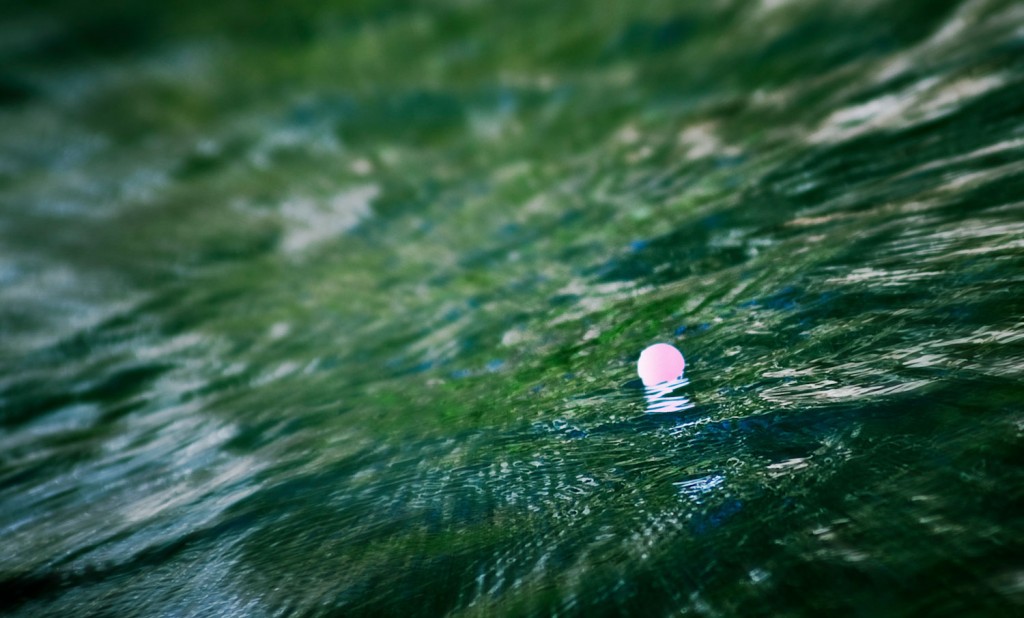
IS THERE EVER A TIME, WHEN NYMPHING, THAT IT CAN BE BENEFICIAL TO LIFT THE STRIKE INDICATOR OUT OF THE WATER DURING A MEND?
When I first started learning the art of mending fly line, I constantly struggled with keeping my striking indicator and dry fly from moving across the surface of the water. Quite often, I not only moved them during my mends, I even lifted them completely out of the water in the process. Most of the time that wasn’t a good thing, because it usually caused my flies to be pulled off my intended drift line, and that greatly hindered my ability to catch fish, no matter how accurate my initial presentation cast happened to be. I learned quickly, that poor mending, and sloppy line management, were the two main factors in keeping me from getting my rod bent with trout. There was no doubt that my problem with mending fly line laid in the fact that my technique was awful. I thought I was a whole lot maturer than I really was as a fly fisher, failing to realize that I had just begun to skim the surface of learning the intricacies of fly line mending. Such as, determining when or when not a mend was called for during a drift, mend timing and form.
Read More »Carp on the Fly – 12 Q&A’s to Get You Ready
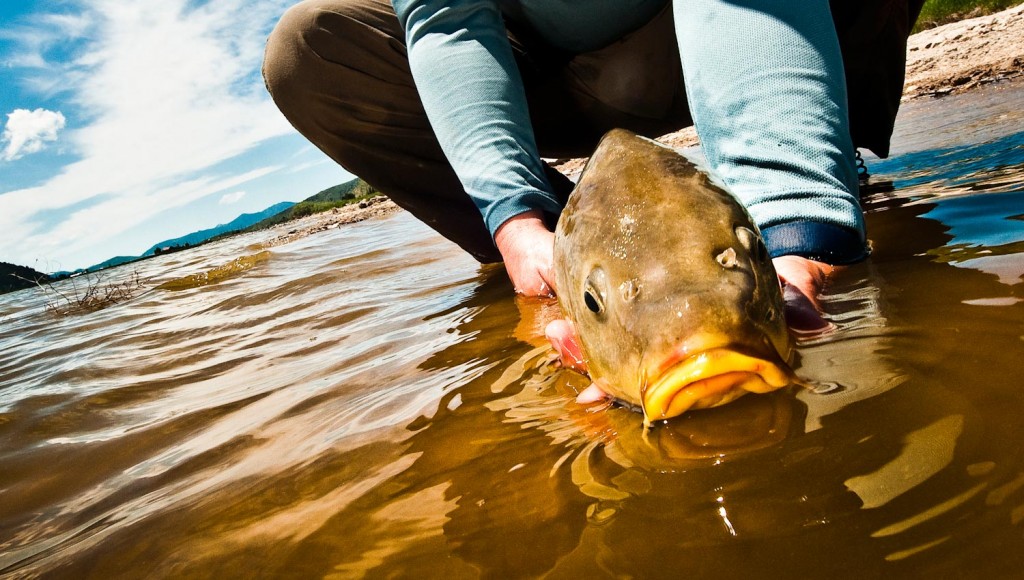
Good friend and fly fishing guide, Ryan Dunne has been capitalizing on the growing carp buzz by fly anglers lately.
Ryan commented, “I’ve seen a significant increase in carp fishing inquiries the last two years, and when the dog days of summer arrive and the trout fishing bite goes south, I now opt for poling my skiff and guiding my clients to carp on my local rivers and lakes”. Thank you Ryan for taking the time to sit down with Gink & Gasoline to answer twelve frequently asked questions about fly fishing for carp.
Have you found certain colors of fly patterns to be more effective than others?
I find that the water conditions and ambient light conditions dictate which color is more effective. I typically stick to four different colors when tying carp flies. They are black, brown, olive, and orange. Although the majority of my flies are tied in the aforementioned colors, I do tie with other colors as well.
Have you found certain fly tying materials (synthetics or natural) that carp seem to dislike?
I haven’t noticed a difference in carp behavior towards either type of material. However, most of my fly patterns contain a combination of both synthetic and natural fly tying materials.
What are a couple of your favorite go-to carp flies?
My two favorite patterns are the Carp Carrot and Carp Dragon.
Is the weight of your fly patterns critical and if yes, when do you prefer heavier flies?
Weight is definitely a key part to my subsurface carp patterns. Feeding carp rarely stay in one place, so you want to get your fly in the feeding zone as quick as possible. Water depth will dictate the weight of my patterns. I find that bead-chain and dumbbell eyes in various sizes are ideal for carp patterns.
When would you say is the most consistent time to go carp fishing?
Read More »Trout Deformities

I SPOTTED THIS LITTLE GUY IN A HATCHERY SUPPORTED STREAM IN NORTH CAROLINA AND FISHED TO HIM UNTIL I CAUGHT HIM SO I COULD GET A PHOTO.
While not common exactly, deformities like this are not unusual in either hatcheries or in the wild but you seldom see a ‘special’ fish like this in a wild stream. Nature deals with this sort of thing in short order. In a hatchery, however, a fish like this will do fine and grow to maturity.
This brook trout would have been a solid 16 inches if he were normal. A buddy suggested I bank him. There was no need. This kind of deformity stems from injury to the fish’s spine early in life. There are no defective genes or disease to pass along so I released him. After all, he plays an important role in the ecosystem, at least from the otter’s perspective.
There can certainly be problems with hatchery raised fish. Disease and poor genetics can wreak havoc on wild populations. On the whole, I think North Carolina does a good job and it’s important to remember that this is a regional issue that is best evaluated by region. What’s right for a trout stream in North Carolina is not right for a steelhead river in Oregon. That’s another topic worth some considerable ink, but not just now.
It did get me thinking about some more troubling fish deformities. Specifically Idaho’s two-headed trout. There was a little bit of excitement about it when the New York Times published photos, in February of 2012, of the deformed fish which were
Read More »Are We Being The Best Ambassadors For Fly-Fishing?
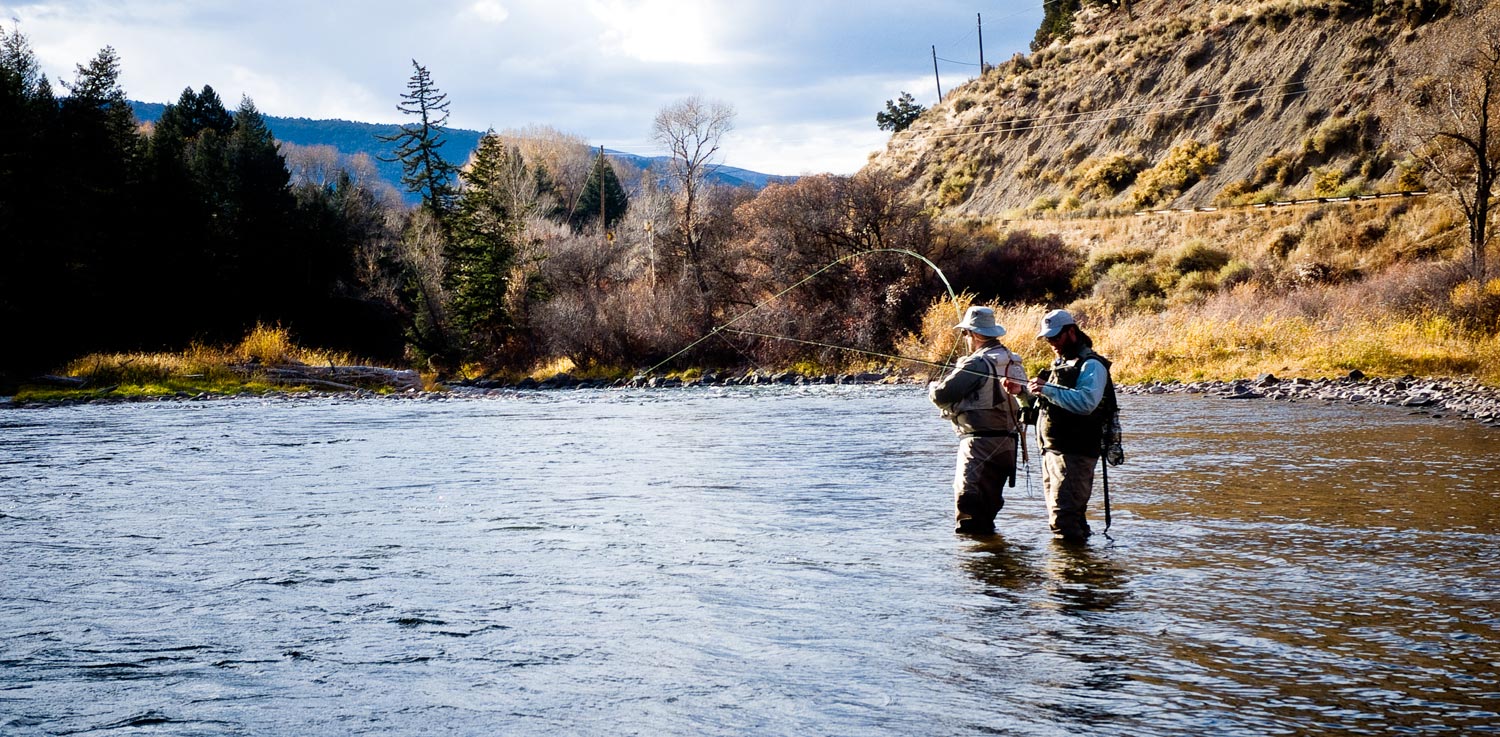
Are you proud of how you represent fly-fishing?
I sat in a meeting the other day, a discussion really, with a group of fly fishing guides. Most of them are guys I like and respect. I was very quickly stoked at, from my perspective, how they all got it wrong. The experience left me frustrated and angry for about twenty-four hours. After a cool-down period I’m ready to discuss it here. If what I have to say makes you angry or defensive, you should take a hard look in the mirror.
By any measure, guides are the gateway to the sport. They are the educators, informants and even the evangelists of fly fishing. They, and the guys at the fly shop, are the most common point of contact for the angler new to fly fishing. They are skilled, hard working, motivated individuals with a passion for what they do. If they weren’t, they’d have washed out of the business. Many of my best friends are guides and some of them are the best examples of what guides should be. So what’s my beef?
The first question put to this group of guides was, “Who are your clients?”
What followed was about a half hour of bitching and moaning with the common thread being, “our clients suck.”
To my ears this is inexcusable on every level. To be fair, I don’t think most of these guys are prone to thinking that way, but it only took one toxic personality to pipe up and they all piled on with comments about their clients being idiots, not being able to cast or tie knots or follow instructions. They also agreed that most of their clients did not want to be told they were doing something wrong, an important point I will return to.
I get it. There is no shortage of unskilled anglers out there. Many of them, as the group described, are business tycoons who are not accustomed to be told they are wrong. Still, I think there are a couple of very important points being overlooked.
If you are a fishing guide, you are in a service industry. You are being paid for your time and as long as you are treated with basic human respect, it’s up to the client how that time is spent. I have spent my entire career in service to clients who don’t understand my job and are often completely unreasonable and I have never complained about having a job. If that job allows me to spend my days on the water doing something I love, that goes double.
The root of much of this is ego, pure and simple. Fishing guides, and for some reason especially trout guides, can be a wildly egotistical lot. If this stings, it’s likely true. I heard comments like, “He’s a surgeon, you’d think he could tie a knot.” I’ll be the first to admit that doctors can be a pretty egotistical bunch as well. They say the difference between God and a doctor is that God doesn’t think he’s a doctor. Regardless, anyone with that degree has made a commitment to mastering something far more challenging than catching a trout. Perhaps the reason he’s not a great angler is because his job has left him little time for it, and when the time comes that I need surgery, I damned glad his priorities are not the same as mine.
If you expect to be respected for putting in the time, and making the sacrifices, necessary to master the art of fly fishing, then you’d better first learn to respect the choices of your clients. Everyone has skills. To think that being a good fisherman, or even a great fisherman, makes you better than anyone else is childish.
Now I’m going to get to what really raises my hackle.
Read More »